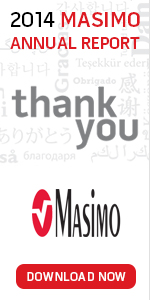
Clinical Accuracy
Background – Laboratory Hemoglobin Variability
- Many clinicians are not familiar with the level of variability that exists in laboratory hemoglobin measurements, both within and between laboratory device models.
- In a study of 5 different models of laboratory CO-Oximeters, using two of each lab CO-Oximeter, for a total of 10 devices, investigators reported the average standard deviation was 0.5 g/dL over all five devices and the max was 1.2 g/dL.1
| Manufacturer Model | Radiometer ABL-735 | Bayer Rapidlab 860 | Nova STP CCX 1 | Roche Omni S | Instrumentation 682 CO-Oximeter |
| Bias (g/dL) | 0.0 | -0.3 | -0.8 | -0.4 | 0.4 |
| Standard deviation (g/dL) | 0.1 | 0.2 | 0.3 | 0.8 | 1.2 |
- Many clinicians are also not familiar with the level of variability that exists between laboratory hemoglobin methods, because they would rarely have a clinical reason to send the same blood sample to two different lab devices.
- There is even greater variability when analyzing hemoglobin values from two different laboratory methods.
- The most common method of measuring hemoglobin in the central lab is through a hematology analyzer, while in the operating room and ICU it is most often through a CO-Oximeter, the same device used for arterial blood gas measurements.
- In a study done at the Mayo Clinic, 471 consecutive blood samples during surgery were run on both the central lab hematology analyzer as well as the department CO-Oximeter.
- The results showed two calibrated lab devices analyzing sequential blood draws varied up to 2 g/dL.

- This is significantly greater than most clinicians expect, but it is real variation.
- Intra- and inter-laboratory device variation is important information to know when assessing a new hemoglobin method like SpHb.
SpHb Accuracy
- In Masimo's FDA submissions, SpHb has been consistently validated in a range of 8 to 17 g/dL with accuracy of 1.0 g/dL ± at one standard deviation.2
- An independent study in the surgical intensive care unit evaluated 471 hemoglobin measurements from 62 patients.3
- SpHb, a satellite laboratory CO-Oximeter (Siemens RapidPoint 405), and a point-of-care device (HemoCue 301) were compared to reference hemoglobin from the central laboratory hematology analyzer (Sysmex XT2000i).
- Satellite lab CO-Oximeter was 0.9 ± 0.6 g/dL (Arms 1.1 g/dL)
- Point-of-care Hemocue was 0.3 ± 1.3 g/dL (Arms 1.3 g/dL)
- SpHb was 0.0 ± 1.0 g/dL (Arms 1.0 g/dL)
- It is worth noting that all methods have outliers.

- In addition, changes in hemoglobin from the central lab hematology analyzer occur when multiple measurements are taken. They can go up, go down, or stay roughly the same.
- Researchers also evaluated how the changes in satellite lab CO-Oximeter, HemoCue, and SpHb, compare to changes in central lab hemoglobin.
- Both visually and by the correlation (R value), SpHb trend accuracy was similar to the 2 invasive methods.
- It is worth noting that all methods have outliers.

All available SpHb studies are listed here.
REFERENCES
- 1 Gehring H et al. Anesth Analg. 2007;105:S24 -30.
- 2 Masimo FDA 510(k) Submission Data.
- 3 Frasca D et al. Crit Care Med. 2011 Oct;39(10):2277-82.






